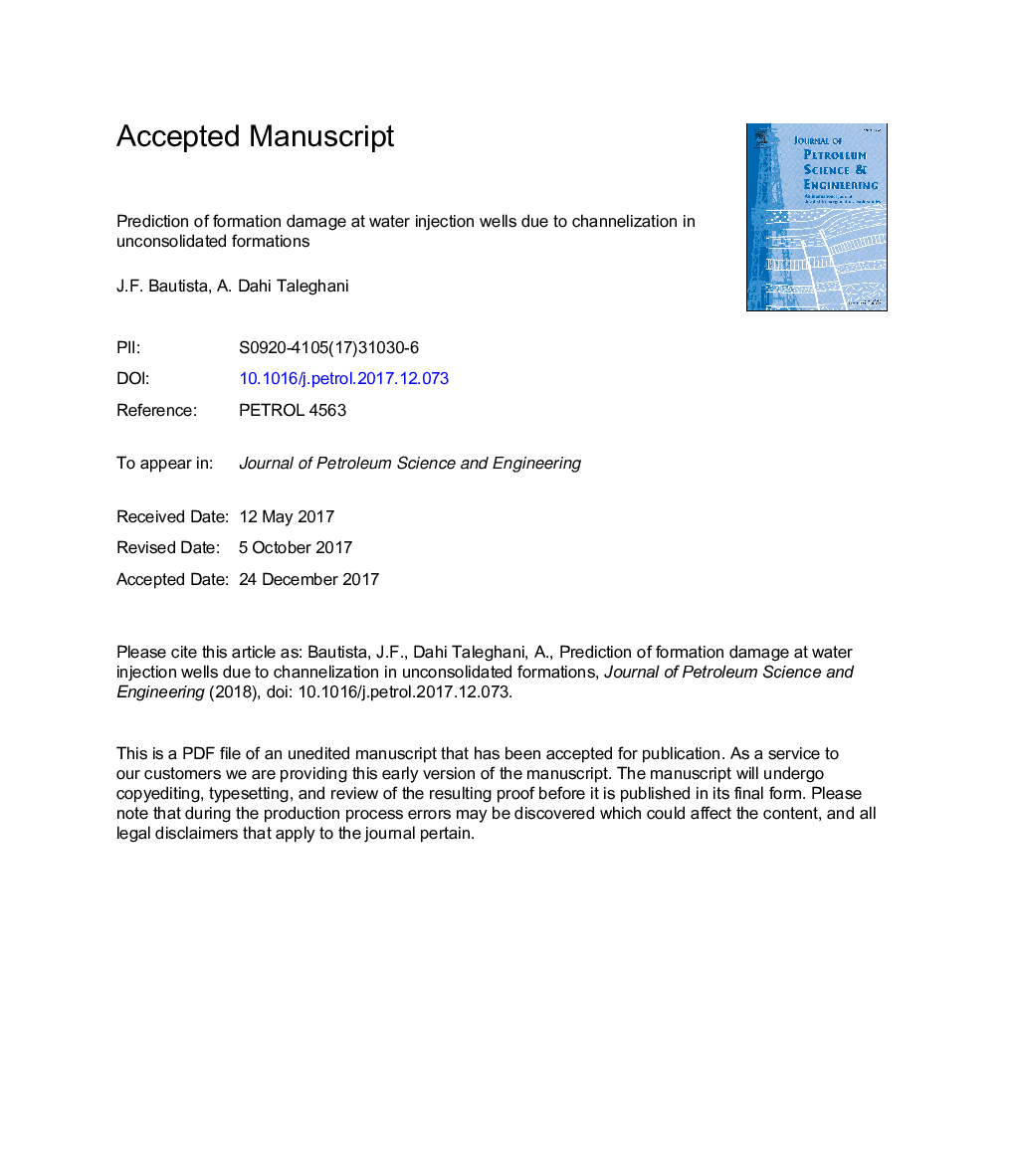| Article ID | Journal | Published Year | Pages | File Type |
|---|---|---|---|---|
| 8125137 | Journal of Petroleum Science and Engineering | 2018 | 23 Pages |
Abstract
Formation damage due to chemical reactions or mechanical failure of the rock is a well-known issue in the oil and gas industry. In this paper, we look at injectivity changes of water injectors targeting unconsolidated formations as a result of sand channelization. In this situation, sand particles migrate from the formation matrix toward the wellbore and consequently affect permeability of the formation and completion components like frac-packs or gravel-packs. To simulate this phenomenon, we propose a model that decomposes the sand matrix into two different phases by means of their volumetric fractions. The first phase consists of the immobile granular phase while the other is the fraction of grains that are detached from the matrix and carried away by the fluid. The ratio of these two phases evolves over time by means of erosion and deposition. A finite element code for this model is developed and implemented for different reservoir conditions. The results show how local porosity evolves over time around the wellbore by the formation of channels that enhance the flow; however, upon well shut-in, flowback induced by the water hammer effect brings large amounts of sand into the well and fills it up. A study of the effect of frac-packs which are typical completions for wells targeting soft formations is performed to demonstrate potential damage of repetitive shut-ins on injectivity in these wells. The presented model appears as a robust tool to predict sand production for different completion systems to achieve more sustainable injection operations.
Related Topics
Physical Sciences and Engineering
Earth and Planetary Sciences
Economic Geology
Authors
J.F. Bautista, A. Dahi Taleghani,
